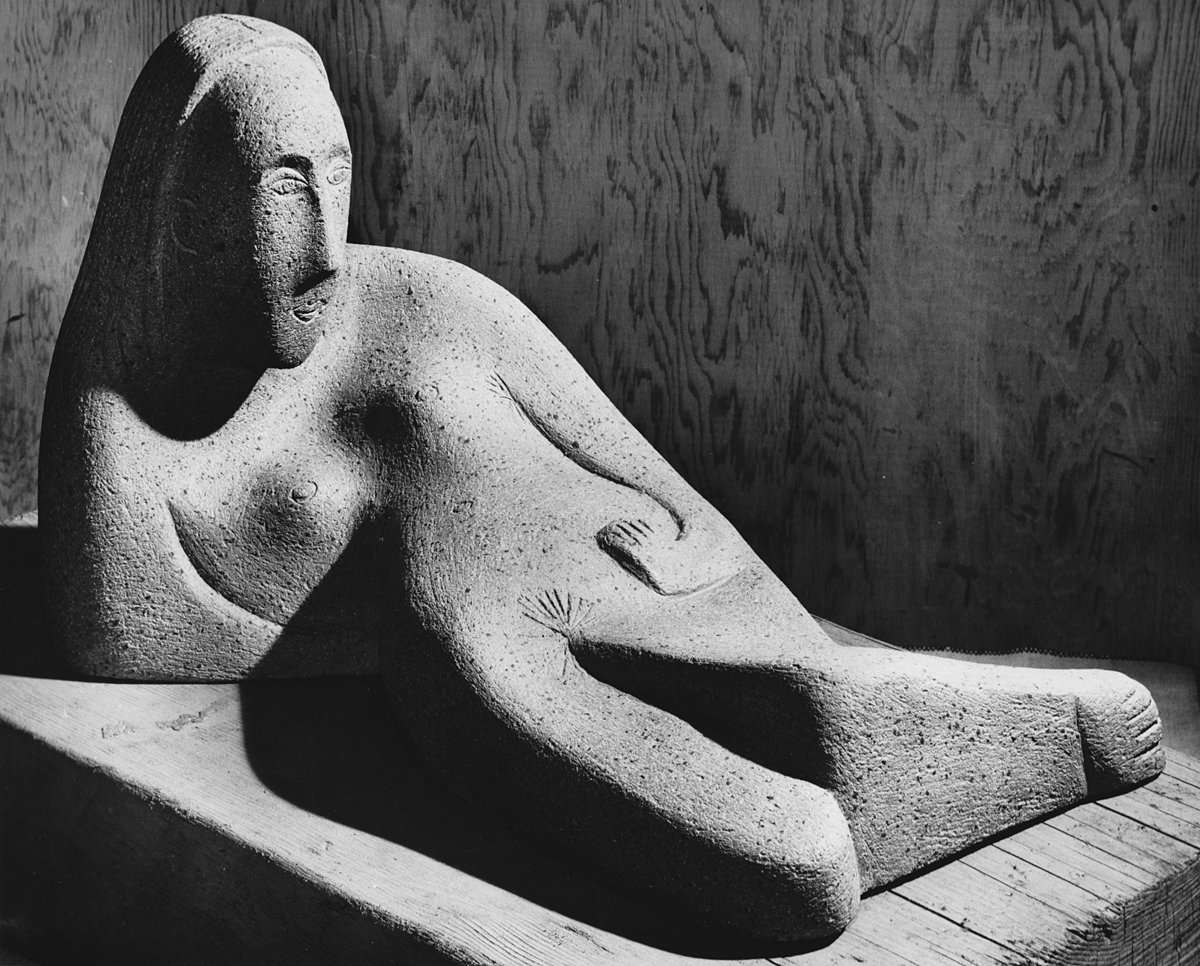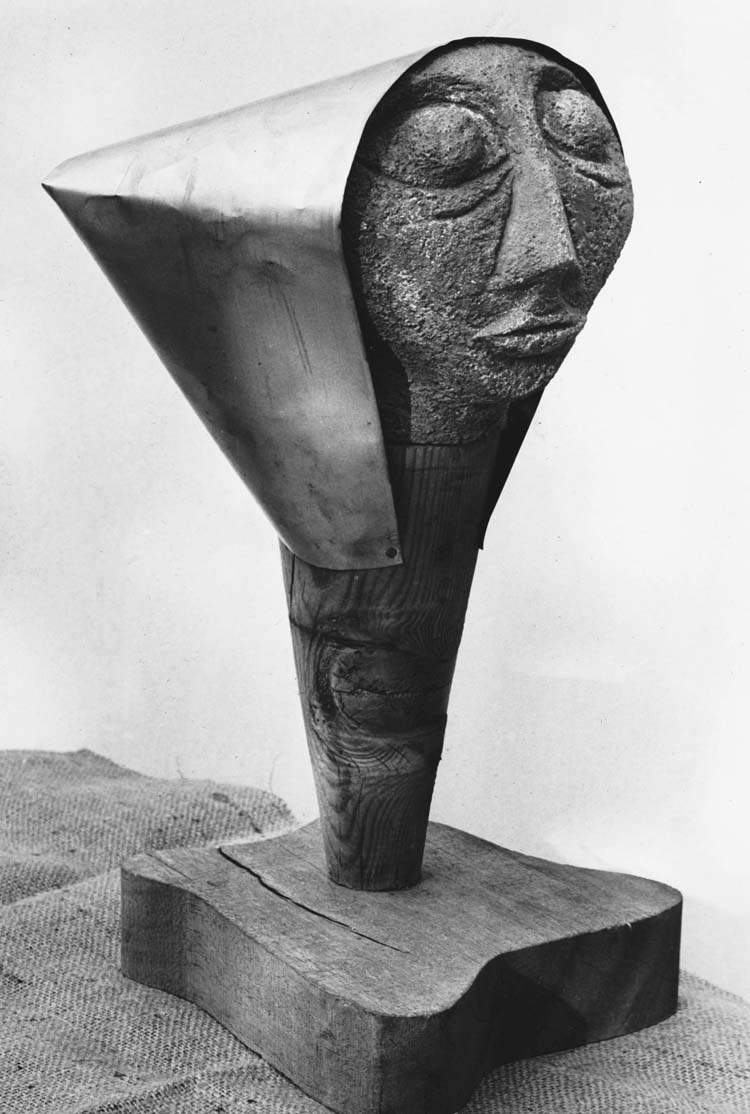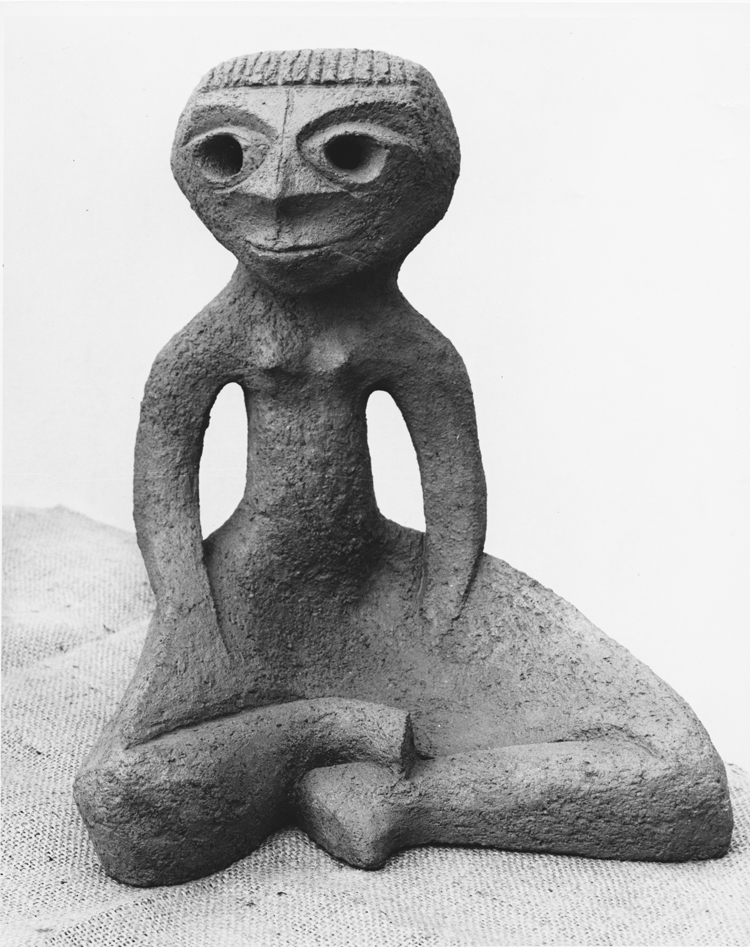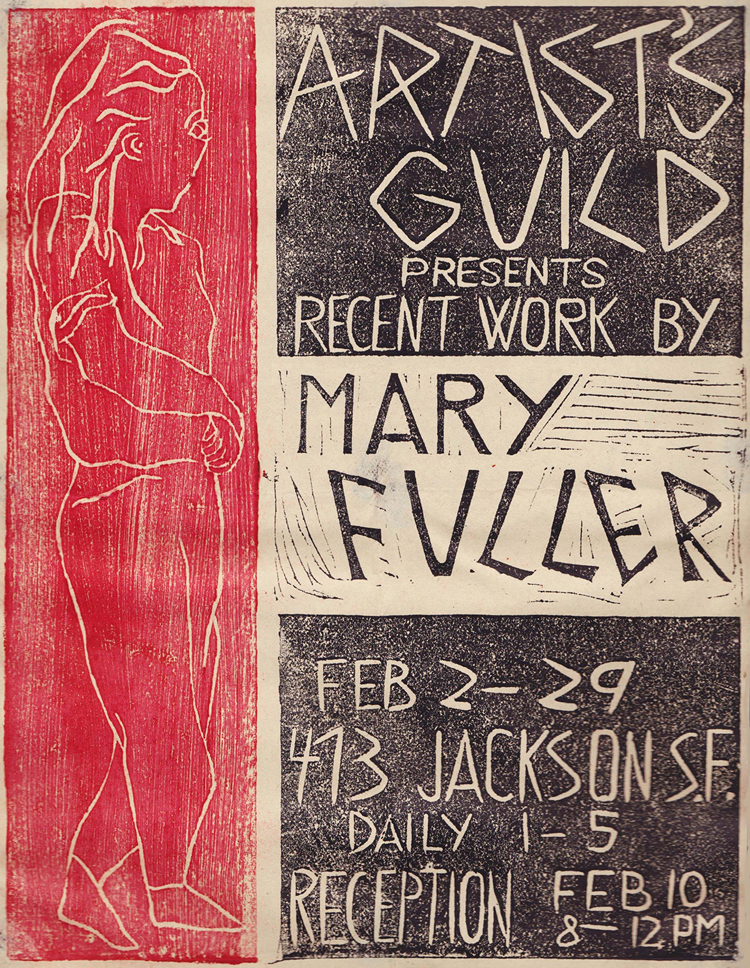Fierceness Within - Page 2
 |
 |
 |
 |
|
|
 |
|
|
And she's about to undertake a major change in her life—selling and moving from the two-acre, mountainside ranch that includes the house and studios she and her husband, Robert 'Mac' McChesney, hand-built in 1952, three years after they married.
The ranch, on Sonoma Mountain near Petaluma, must be one of the greatest sculpture parks in the state, with dozens of Fuller's sculptures—bears, owls, many lions and cats, alligators, creatures that cannot be named—gazing down from hillsides, attached to fence-posts, occupying her terrace.
One sculpture is a memorial to Mac, who died seven years ago. Mac was an abstract painter far more famous than his wife. Some of his paintings hang in their home, and bones he collected on the mountain form designs on several ranch walls.
Before leaving the ranch, Fuller is selling off much of her art.
Did Mary Fuller ever achieve the success the Chronicle thought she deserved? Not in fame, nor in money. But she never thought she'd make a lot of money.
Success came in other ways. Never famous herself, she knew many artists who were—painters Mark Rothko, Clyfford Still, Agnes Martin among them. She was an integral part of, and the leading chronicler of, a special moment in the Bay Area art scene of the late 1940s that saw the birth of a regional movement.
"That the movement was very brief is clear," she wrote in A Period of Exploration, San Francisco, 1945-1950, a book built around long interviews she conducted with many artists that accompanied an Oakland Museum exhibit in 1973, "but perhaps such enthusiastic periods always are."
Fuller had moved to the Bay Area just as World War II was starting. A student at UC Berkeley, she dropped out to clear her head from worries about the war that was killing so many friends and strangers, and to work with her hands.
She learned ceramics by working at the now-legendary Berkeley pottery California Faience, creating ceramic sculpture and decorative pieces. She and her boyfriend, still working at the Faience plant, formed their own ceramics company.
To make real money she took a job welding ships in Richmond's Kaiser Shipyards.
Fuller—the name she uses as an artist—also had a career as a writer, writing about art, writing journalism, turning out mystery novels—and even writing several literary novels that did not get published.
As a sideline Mary Fuller McChesney also got involved with the world around her, mostly fighting against environmental depredations, winning some battles, losing others.
She marched against the Vietnam War, of course, and in earlier years picketed grocery stores in Oakland and Berkeley that wouldn't hire blacks.
Mary initially opposed Mac's suggestion that they move full-time to remote Sonoma Mountain—their ranch is three miles up a steep, twisty road. But she came to love living on the mountain. "It started to really work for me here," she says.
"Mac was a great hunter," she recalls of the early days. "We lived off venison for five years. He shot them and brought them in and skinned them. We processed all the meat and made soup out of it, and canned the soup and froze the meat."
The ranch became a social center for intellectuals, with Mary preparing simple food and the wine flowing.
Bob Anshen, the architect who worked for Joe Eichler, was part of the scene.
"I used to call him the grasshopper," Mary says. "He had this long, kind of grasshopper face, and he was just coming out, bopping out all the time, and he was really a drunk. I mean an alcoholic, poor baby."
"He had a convertible with a horn that had the sounds of cows on it, and he loved to slow down and make the horn go and have all the cows run. He was marvelously entertaining and very smart."




